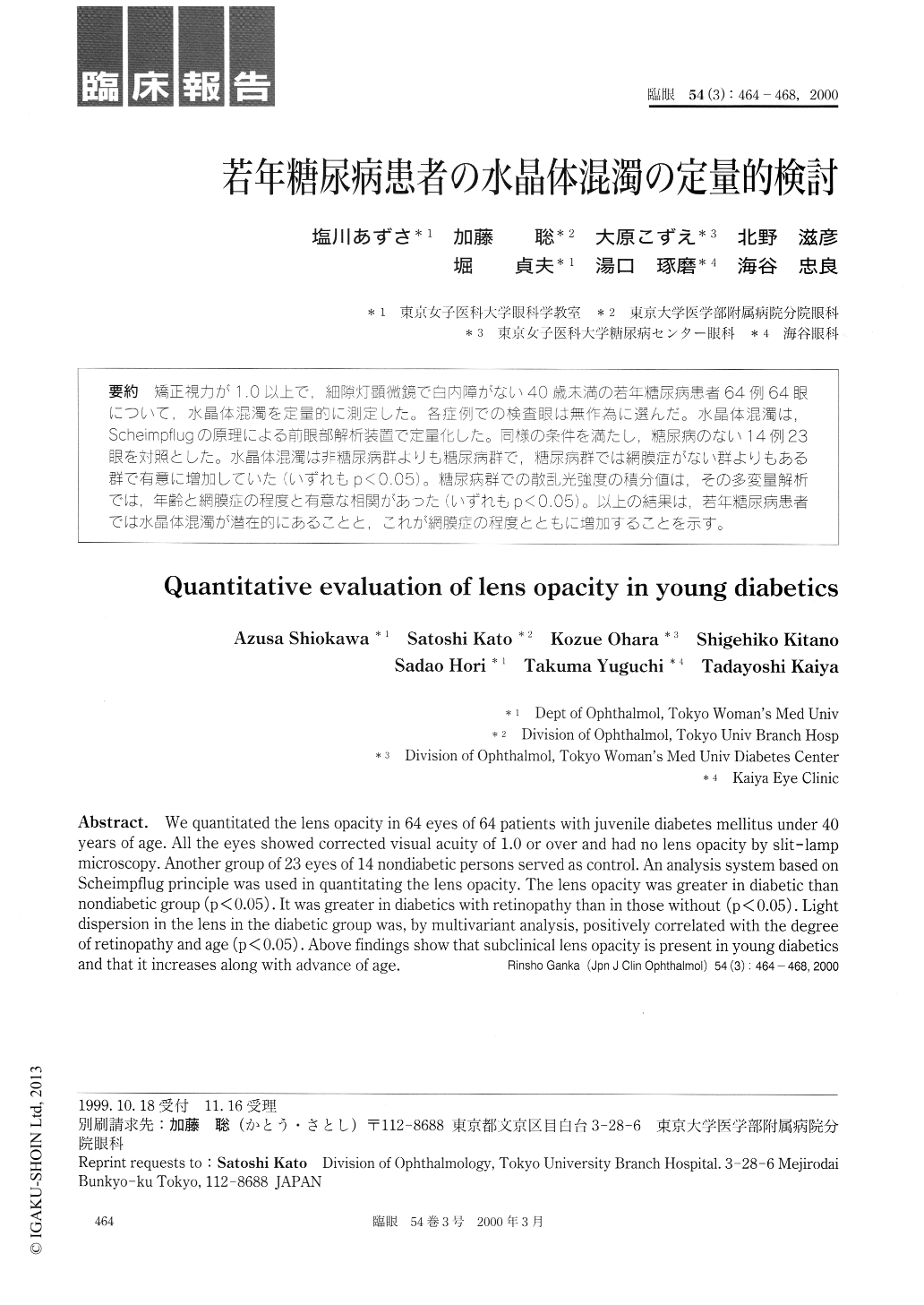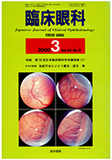Japanese
English
- 有料閲覧
- Abstract 文献概要
- 1ページ目 Look Inside
矯正視力が1.0以上で,細隙灯顕微鏡で白内障がない40歳未満の若年糖尿病患者64例64眼について,水晶体混濁を定量的に測定した。各症例での検査眼は無作為に選んだ。水晶体混濁は,Scheimpflugの原理による前眼部解析装置で定量化した。同様の条件を満たし,糖尿病のない14例23眼を対照とした。水晶体混濁は非糖尿病群よりも糖尿病群で,糖尿病群では網膜症がない群よりもある群で有意に増加していた(いずれもp<0.05)。糖尿病群での散乱光強度の積分値は,その多変量解析では,年齢と網膜症の程度と有意な相関があった(いずれもp<0.05)。以上の結果は.若年糖尿病患者では水晶体混濁が潜在的にあることと,これが網膜症の程度とともに増加することを示す。
We quantitated the lens opacity in 64 eyes of 64 patients with juvenile diabetes mellitus under 40 years of age. All the eyes showed corrected visual acuity of 1.0 or over and had no lens opacity by slit-lamp microscopy. Another group of 23 eyes of 14 nondiabetic persons served as control. An analysis system based on Scheimpflug principle was used in quantitating the lens opacity. The lens opacity was greater in diabetic than nondiabetic group (p < 0.05). It was greater in diabetics with retinopathy than in those without (p <0.05) . Light dispersion in the lens in the diabetic group was, by multivariant analysis, positively correlated with the degree of retinopathy and age (p < 0.05). Above findings show that subclinical lens opacity is present in young diabetics and that it increases along with advance of age.

Copyright © 2000, Igaku-Shoin Ltd. All rights reserved.


